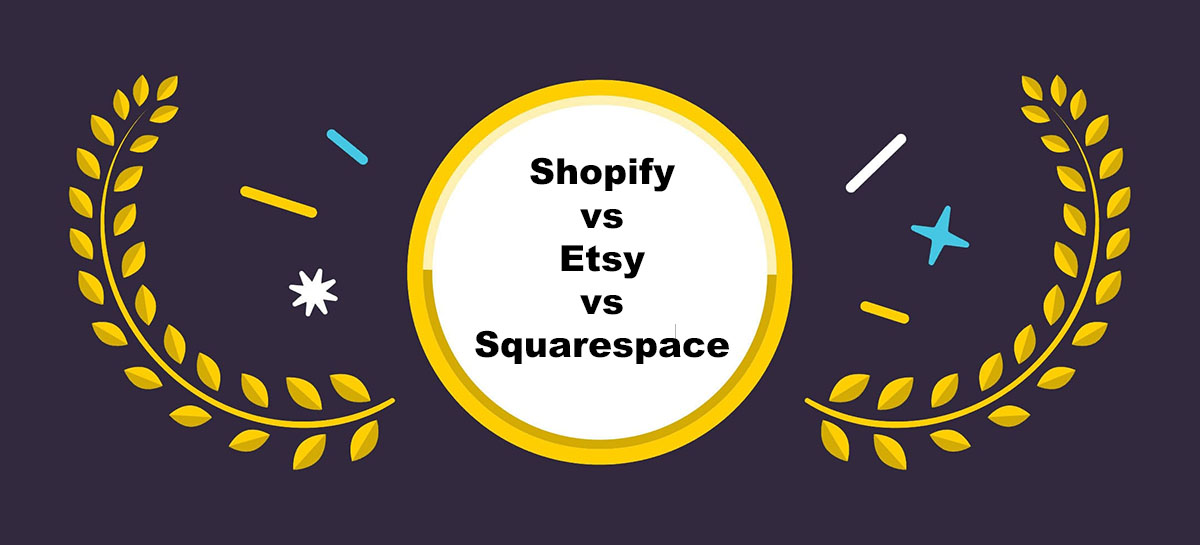When choosing a platform to sell online, Shopify, Etsy, and Squarespace are three names you’ll keep hearing. Each one’s got strengths — but which one’s actually right for you?
Shopify is the top pick if you’re serious about building a real ecommerce business. Etsy is best for getting your handmade or vintage products in front of shoppers fast. Squarespace is ideal if you want your store to look like it was made by a pro designer — without touching any code.
Shopify vs Etsy vs Squarespace: Quick Verdict
Shopify – Best for growing a real online business: Try it for $1/month for your first 3 months
Etsy – Best for side hustlers or handmade goods
Squarespace – Best for creative sellers who want stunning site design
Shopify is built for growth, offering robust ecommerce tools, top-tier scalability, and seamless integrations.
Etsy is a marketplace — easy to start on, but harder to stand out long-term.
Squarespace gives you gorgeous templates and solid ecommerce features for smaller shops, service-based brands, or digital products.
That’s what I’m here to help you figure out.
Shopify vs Etsy vs Squarespace: My Comparison Table
| Category | Shopify | Etsy | Squarespace |
|---|---|---|---|
| Set Up & Editor | Super easy drag-and-drop editor, plus Sidekick AI helps you set up fast. | Easiest of the bunch — I just created a shop, listed a few items, and boom, I was live. | The Blueprint tool builds a layout for you. Then you tweak it with a drag-and-drop editor. Super smooth. |
| Ecommerce Tools & Features | Everything I need — from advanced inventory to discount codes to POS. I can sell anywhere. | Basic stuff only. It’s made for handmade sellers, not scale. No built-in POS. | Great for small stores and services. I like it for subscriptions or client bookings, but it’s not built for high-volume ecommerce. |
| Pricing | Starts at $29/month, but you can try it for $1/month for 3 months. Worth every penny if you’re serious. | Free to start, but the fees add up: 20¢ per listing + 6.5% transaction fee + payment processing. | Starts at $36/month if you want to sell. There’s a 3% fee on the Business plan too. |
| Payment Options | Shopify Payments is seamless. I also hooked it up to PayPal, crypto, and others. No extra fees on their gateway. | Limited to Etsy Payments. It works fine but you’ve got zero control. | Works with Stripe, PayPal, Apple Pay. Not as many options as Shopify, but enough for most people. |
| Templates | 150+ themes designed to sell. I’ve used both free and paid ones. They’re sharp and mobile-friendly. | You’re stuck with the same basic layout unless you pay extra for Etsy Pattern. Not worth it in my opinion. | This is where Squarespace shines. The designs are chef’s kiss — modern, clean, and super customisable. |
| SEO | Full control over meta titles, descriptions, URLs, and more. Built-in blog helps a lot too. | SEO is super limited. You’re relying on Etsy’s marketplace traffic more than your own optimisation. | Decent SEO setup. You get customisable titles and URLs, plus it loads fast which Google likes. |
| Marketing Tools | I love the built-in email tool and the AI product description writer. You can plug in other tools too. | You’re mostly on your own. Etsy brings the traffic, but you have to stand out somehow. | Has email marketing, blogging, and social sharing tools. Great visuals but not as conversion-focused as Shopify. |
My Take: Who Should Use What?
Shopify is for you if…
You’re building a real business, and you want full control to scale. Whether you’re selling one product or a thousand — Shopify grows with you.
Etsy is for you if…
You’re just getting started or selling as a hobby. It’s easy, quick, and the built-in traffic helps — but you’ll hit a ceiling fast.
Squarespace is for you if…
You want a site that looks like a designer made it — without touching code. Great for creators, coaches, or selling services.
Pros and Cons
Shopify Pros and Cons
Pros:
- Packed with world-leading sales features
- Excellent app ecosystem
- Omnichannel sales features
- Excellent scalability
- Tons of built-in marketing tools
- Great AI companions
Cons:
- Can be expensive, particularly with transaction fees
- Tinkering with advanced features requires some tech knowledge
Etsy Pros and Cons
Pros:
- Effectively free to start selling
- Instant access to potential customers
- Straightforward interface (no expertise required)
- Can integrate with some other platforms
- Some marketing tools offered
Cons:
- Very limited branding options
- Highly competitive marketplace
- Not the best customer support
- Fees can add up
Squarespace Pros and Cons
Pros:
- Beautiful templates, and great design tools
- Powerful Design Intelligence
- Robust selling options for all kinds of businesses
- Useful marketing suite with SEO features
- Built-in scheduling tools
Cons:
- Missing some advanced sales features
- Pricing can be confusing
- Fewer integrations than Shopify
Pricing Comparison: Which Offers the Best Value for Money?
Ready for a more detailed review? Let’s dive straight into pricing.
Overall, Shopify is the most expensive platform of the three.
Sure, you can get started with Shopify Starter for around $5 per month – but you don’t get a full store.
The core plans range from $29 to $299 per month (if you pay annually), then there’s Shopify Plus, which starts at $2,300 per month for enterprise brands.
Shopify also charges transaction fees – unless you’re using Shopify Payments – plus there are costs for premium themes and apps.
Overall, yes, Shopify can look expensive up front. But for that price, you get a lot – robust features, integrated marketing, advanced apps, and the ability to scale without needing to uproot your entire site later.
Etsy is – arguably- the cheapest option.
You can open a store for free, and simply pay a $0.20 listing fee for each item you want to sell. Then, however, there are also transaction fees (6.5%), and payment processing fees to account for.
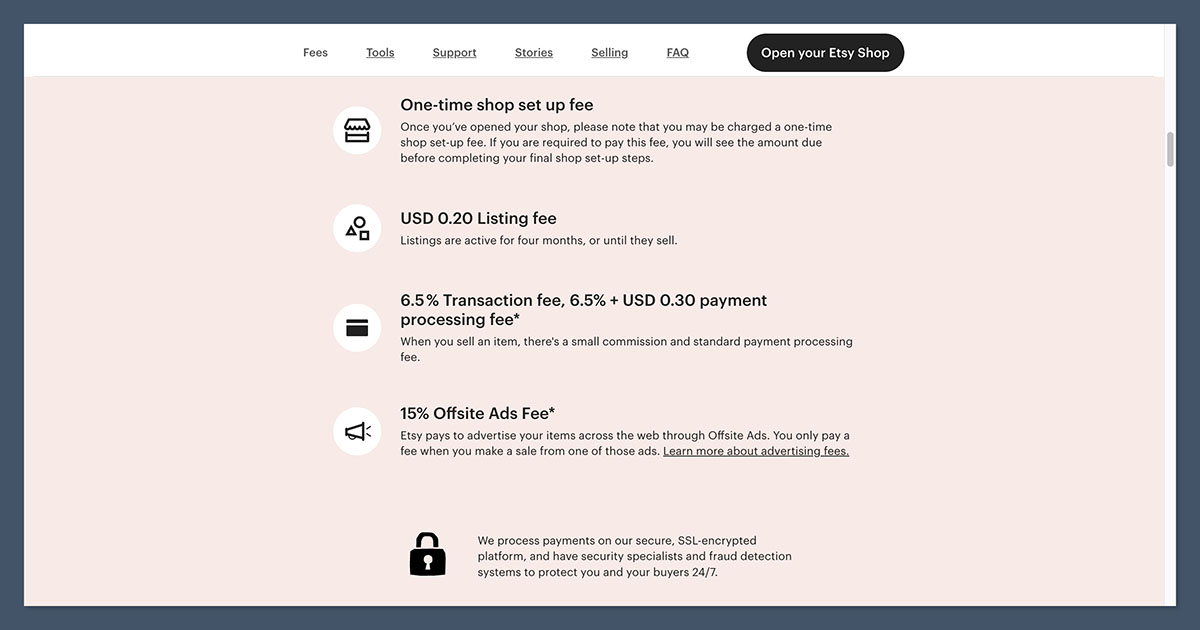
Plus, the optional extras (Etsy Plus, and Etsy Pattern) can add to your expenses, if you want more customization options and Ad credits.
Squarespace falls in the middle. The Personal plan starts at $25 per month – but doesn’t support ecommerce.
The Business plan costs $36 per month – but comes with a 3% transaction fee. Then the Commerce plans cost $40 (Basic) or $72 (Advanced) per month for extra bells and whistles.
Overall, Shopify wins with the “best value for money” in my opinion – combining the best range of features with the best costs.
Website Design Tools: Customizing Your Site
Now, let’s look at web design.
I’m going to start with Etsy here because – let’s face it – there’s not much to say. Etsy wasn’t designed to be a “site builder”; it’s a marketplace. That means you get a standard layout that’s consistent across the platform.
Your options for branding basically come down to a logo, banner, and color changes.
If you really want a “unique” storefront, you can pay for Etsy Pattern at $15/month. But I found its customization somewhat underwhelming, especially compared to a robust site builder.
Shopify is a far more flexible solution, with a handful of free themes, and a huge range of premium templates to choose from.
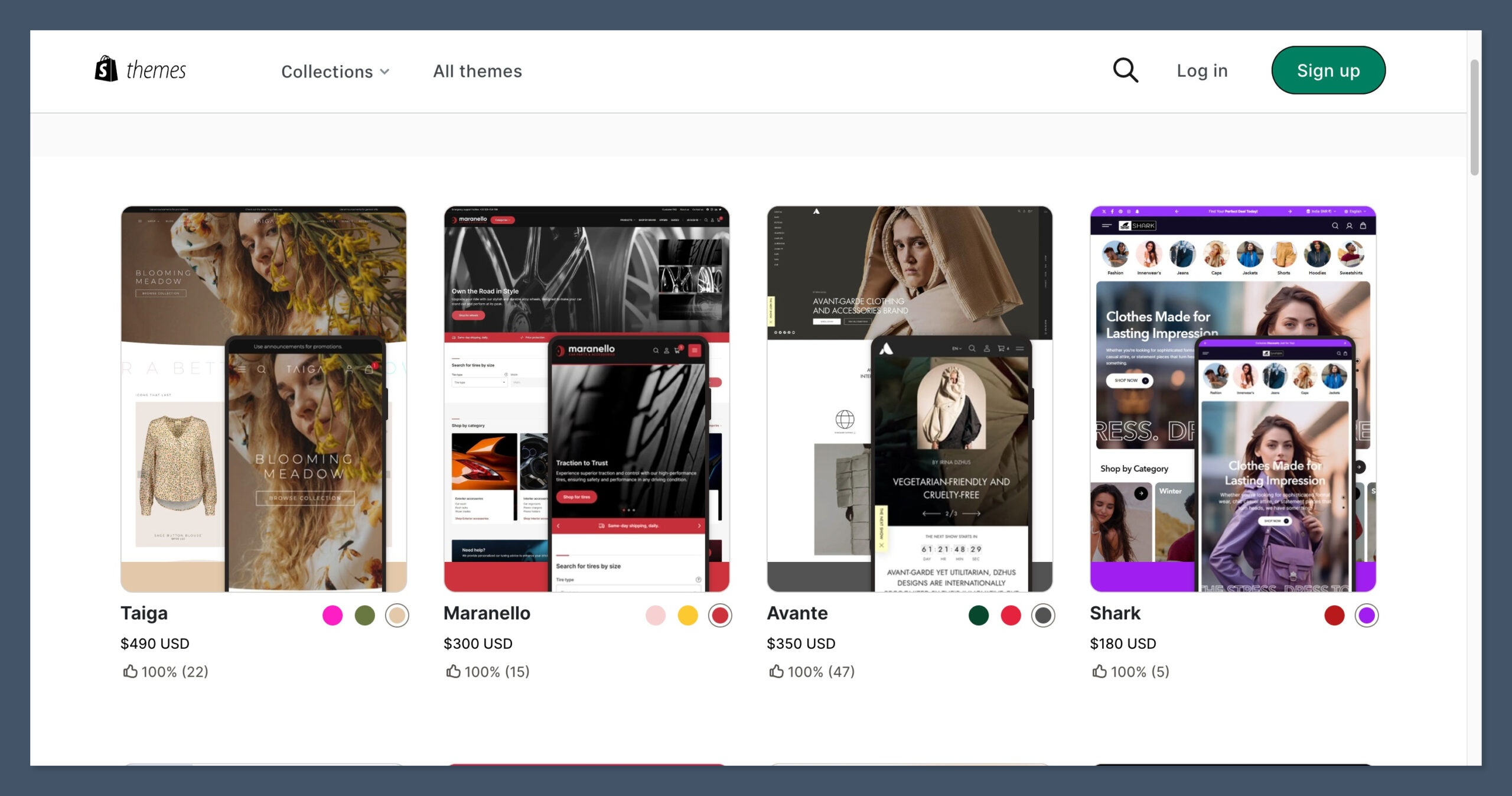
All of the themes are modern, mobile-responsive, and specifically tailored for ecommerce. You can customize them quite a bit – colors, fonts, layouts, sections.
Certain features (like checkouts) do sometimes require a bit of coding knowledge to fully customize. But overall, you get the opportunity to create a store that’s truly yours with Shopify.
While I, personally, love Shopify’s design tools – Squarespace is still the design king.
With Squarespace’s Design Intelligence, and beautiful curated themes – anyone can create a website that looks like it was built by a design team.
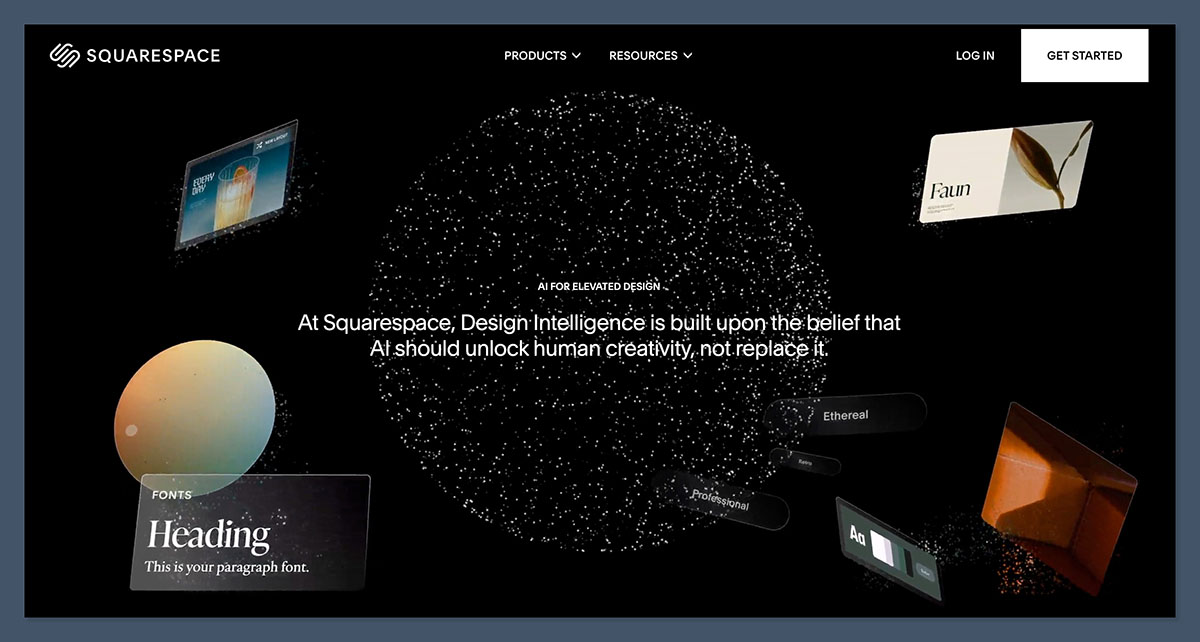
Customization is a breeze too. You can get Squarespace Blueprint to create your site (and content) automatically.
Or you can use the template editor and fluid engine to tweak your store as much as you like.
Ultimately, Squarespace has to win from a design perspective – but of course, there’s a good chance that you want more than just a site that looks good – which takes us to our next section.
Ecommerce: Sales Features and Solutions
If Squarespace takes the crown for design, then Shopify steals it easily for ecommerce.
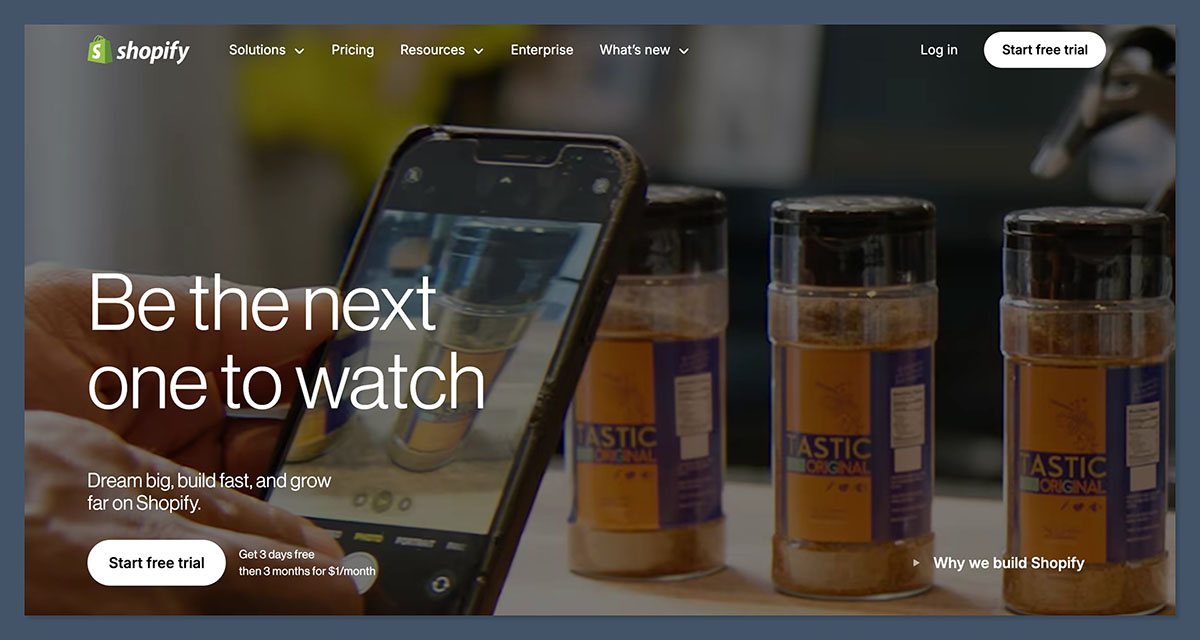
It’s the go-to platform for flexible selling. You can sync Shopify with Amazon, Walmart Marketplace, Facebook, Instagram, TikTok, or even Etsy to boost your sales.
Plus, with Shopify’s integrated POS system, you can sell offline too.
Shopify also makes it easy to create voucher codes, discount coupons, sales banners, and more.
Plus, you can integrate with over 100 payment processors, accept virtually any form of payment, and manage your inventory seamlessly in your backend interface.
Add to that the huge range of apps that you can use for different types of business models (dropshipping, print on demand, subscription services, etc), and it’s easy to see why Shopify is the ecommerce champion.
Squarespace, on the other hand, has been quietly ramping up its ecommerce muscle, especially for small to medium-sized product catalogs, digital items, and subscription/membership selling.
You can even take appointments or sell services. You also get tools for inventory management, digital file downloads, and service bookings.
Still, Squarespace doesn’t offer the same depth of features as Shopify – particularly for those selling physical goods.
Lastly, Etsy is a pretty niche ecommerce solution. The marketplace is hyper-focused on handmade, craft goods, and vintage items. It is possible to sell digital products (printables, planners, etc.) on Etsy.
But the platform lacks advanced inventory management or robust shipping options for large-scale operations.
Sure, you can handle basic order processing and shipping labels, but there’s no POS tool built in, nor can you deeply brand your packaging experience.
Etsy’s real superpower is that it’s a marketplace– there’s an existing crowd of people hunting for special, artisan products already – so you can spend a little less time on marketing.
Marketing Tools: Earning Traffic
Once you’ve built your online store (or storefront in Etsy’s case), you need to draw attention to it.
Shopify, Etsy, and Squarespace all offer different levels of “support” in this area.
Shopify is pretty robust from a marketing perspective. It’s great for search engine optimization – with a customizable blog section, and the ability to tweak page settings like meta descriptions and titles.
You can also take advantage of in-built email marketing and live chat tools with Shopify, or integrate the platform with the solutions you prefer.
One extra bonus of Shopify is that it’s AI tools (like Shopify Magic) can also help you create more compelling, SEO-ready product descriptions, and attractive product pictures – boosting your ROI.
Squarespace offers pretty balanced marketing features too.
You can create email newsletters that align with your website design (and use AI to generate the text).
Like Shopify, Squarespace also gives you a blog, and the ability to customize page SEO elements. Plus, you can integrate the platform with various email marketing and social media apps.
Squarespace also introduced AI content generation for blog posts, product descriptions, and marketing copy. Plus, with the Unfold app, you can design social media graphics that match your brand’s vibe.
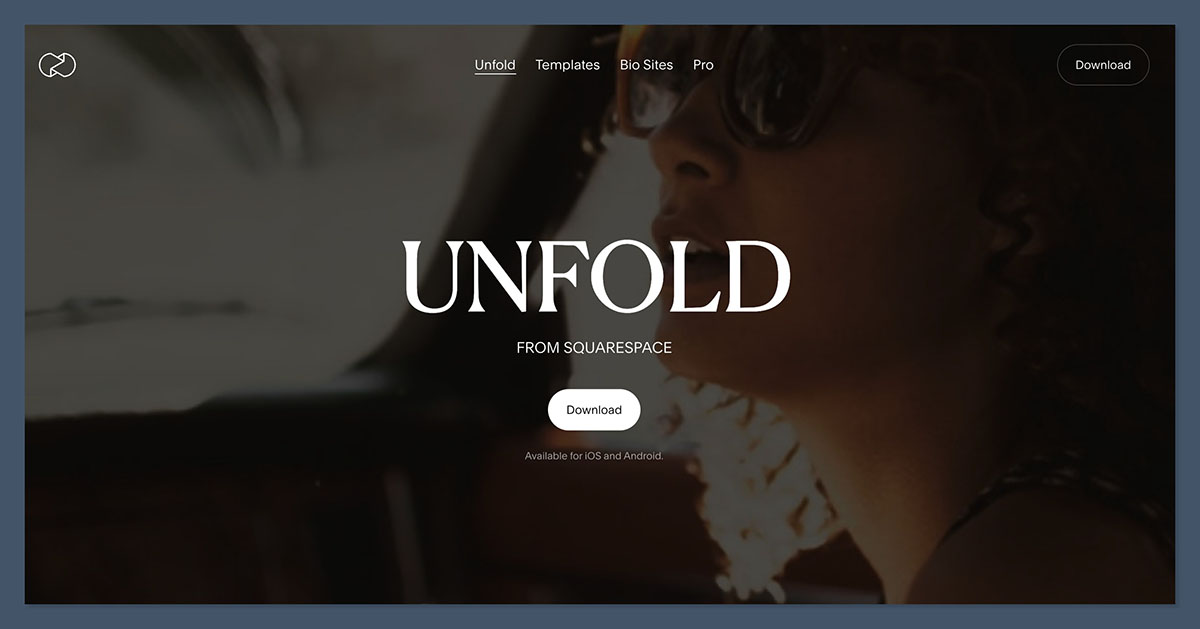
It’s not as all-encompassing as Shopify, but it’s definitely a robust, visually rich marketing environment.
Etsy, unfortunately, offers minimal marketing solutions. Instead, the company is counting on sellers to take advantage of the marketplace’s massive built-in audience.
The trouble is you face stiff competition for attention on this platform. I’d recommend investing quite a lot of time into external marketing efforts (like social media promotions) if you really want to grow.
Ease of Use and Customer Service
Before we wrap up, I want to cover two more, crucial things: ease of use and customer service.
Let’s start with Shopify. When you see all the features this platform has, it’s easy to assume you’re in for a tough learning curve.
However, Shopify is incredibly easy to use – even for beginners. There’s even the Sidekick AI that helps guide you through getting everything set up.
If you do have any issues, the help center is packed with tutorials – so you rarely need to reach out to a human being. But if you do, you’ve got 24/7 chat, email, and phone support in many regions.
Etsy is another platform that’s ludicrously easy to use.
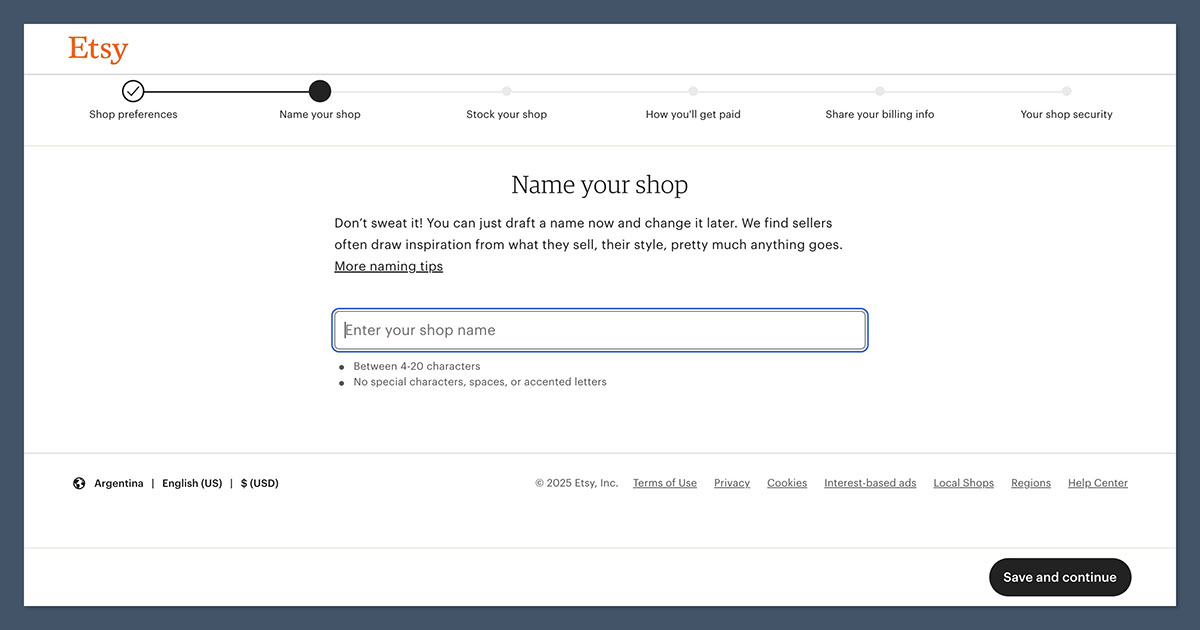
All you need to do is create an account, name your shop, list your items, set up billing, choose how you’ll get paid, and you’re done.
It’s the definition of user-friendly. But if you ever do need customer support – good luck.
Etsy’s self-help resources are decent, but direct contact is mostly limited to a web form or snail-paced email replies.
Finally, Squarespace is about on-par with Shopify for ease of use.
The interface is incredibly straightforward – so anyone can create and run a website. Plus, With the arrival of AI design tools like Squarespace Blueprint, you can spin up a tailored layout super-fast.
Editing is a drag-and-drop dream, though occasionally you’ll find a particular design tweak locked behind a block or style setting.
Customer support is decent: you can chat live with agents on weekdays (depending on your plan) or dig through tutorials and articles – but I think Shopify’s customer support is better.
Final Verdict: Which is Best?
Let’s face it, Shopify, Etsy, and Squarespace are all viable options for online sellers – it just depends on what you’re looking for.
I’d say go with Shopify overall if you’re looking for the perfect blend of value for money, scalability, and flexibility.
If you’re more design-oriented, or selling services, Squarespace is a good pick – just don’t expect to have as many specialized features to explore when you’re ready to scale your company.
If you’re a hobbyist with a limited budget, Etsy might be a good starting point – but I’d honestly recommend upgrading to another platform (maybe even Squarespace or Shopify) as soon as possible.
The quicker you stop fighting for visibility on a crowded marketplace – the better.
Overall, ask yourself what you want for the future of your store, and start there – remember, you can always consider a site migration later if you first pick doesn’t quite meet your expectations.
